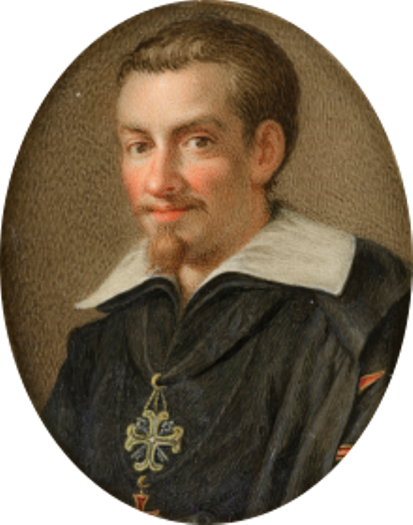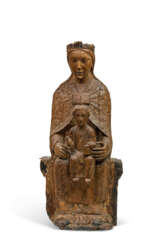vierge à l'enfant

Alain Jacquet is a French self-taught artist, a representative of the American Pop Art movement. In his series of works "Camouflages" the artist often contrasts masterpieces of art history, famous paintings of the past to advertising idols of his time. "Botticelli's Camouflage" (Birth of Venus) is one of his famous works.
Among other things, Jacquet used the techniques of silkscreen printing, photomechanical transfer and screen printing.



Master of the Epiphany of Fiesole or Master of the Fiesole Epiphany (English: Master of the Fiesole Epiphany) was an Italian painter active in Florence in the mid-15th century. The artist, whose name is not known, was given his notational name after the large-scale depiction of the Epiphany he created for the church of San Francesco in Fiesole in the province of Florence.



Francesco Vanni was an Italian painter, draughtsman, printmaker, publisher and printer active in Rome and his native city of Siena.


Bernard van Orley was a versatile Flemish artist and representative of Dutch and Flemish Renaissance painting, who was equally active as a designer of tapestries and, at the end of his life, stained glass. Although he never visited Italy, he belongs to the group of Italianizing Flemish painters called the Romanists, who were influenced by Italian Renaissance painting, in his case especially by Raphael.


David Teniers the Younger was a Flemish Baroque painter, printmaker, draughtsman, miniaturist painter, staffage painter, copyist and art curator. He was an extremely versatile artist known for his prolific output. He was an innovator in a wide range of genres such as history painting, genre painting, landscape painting, portrait and still life. He is now best remembered as the leading Flemish genre painter of his day. Teniers is particularly known for developing the peasant genre, the tavern scene, pictures of collections and scenes with alchemists and physicians.
He was court painter and the curator of the collection of Archduke Leopold Wilhelm, the art-loving Governor General of the Habsburg Netherlands. He created a printed catalogue of the collections of the Archduke. He was the founder of the Antwerp Academy, where young artists were trained to draw and sculpt in the hope of reviving Flemish art after its decline following the death of the leading Flemish artists Rubens and Anthony van Dyck in the early 1640s. He influenced the next generation of Northern genre painters as well as French Rococo painters such as Antoine Watteau.


Henri Matisse, a renowned French visual artist, was celebrated for his vibrant use of color and fluid, original draughtsmanship. Born on December 31, 1869, in Le Cateau-Cambrésis, France, Matisse initially pursued a career in law before turning to art. He first began painting in 1889, a change inspired by convalescence art supplies his mother provided. This marked the beginning of a journey that would see him become a leading figure in modern art.
Matisse's career is notable for its stylistic evolution yet consistent aim to capture the "essential character of things." His early works, characterized by intense colorism, earned him recognition as one of the Fauves, or "wild beasts." The period from 1908 to 1913 was marked by significant developments, with works like "Reclining Odalisque" and "The Red Studio" showcasing his mastery in balance and serenity. In the 1920s, his style evolved to more relaxed forms, with a focus on light, color, and decorative patterns in paintings like his odalisque series.
Matisse's exploration of various mediums, including sculpture and paper collage, reflects his innovative spirit. His later years were dominated by cut paper collages, as health challenges limited his ability to paint. These works, alongside his bold drawings and sculptures, cemented his status as a pioneer in visual art.
For collectors and art experts, Matisse's work remains a testament to creative evolution and expressive use of color and form. His masterpieces can be found in prominent museums and galleries worldwide, continuing to inspire and fascinate art enthusiasts.
To stay updated on new product sales and auction events related to Henri Matisse's art, sign up for our updates. This subscription will keep you informed about opportunities to appreciate and acquire works connected to this iconic artist.


Marie Vassilieff was a French artist born in Smolensk, Russia. She moved to Paris in 1905 to study art, and became a prominent figure in the city's artistic community. Vassilieff was a painter, sculptor, and designer, and was known for her involvement in the Cubist and Montparnasse art movements.
In 1910, Vassilieff opened La Ruche, a studio complex and artist colony in the 15th arrondissement of Paris. The complex was made up of small, inexpensive studios that were rented out to artists who were just starting out, as well as more established artists who needed a place to work. La Ruche quickly became a gathering place for some of the most important artists of the time, including Marc Chagall, Max Ernst, and Amedeo Modigliani.
During World War I, Vassilieff worked as a nurse and ambulance driver, and she was awarded the Croix de Guerre for her service. She continued to work as an artist after the war, and was involved in several exhibitions, including the Salon d'Automne and the Salon des Indépendants.
In addition to her artistic work, Vassilieff was also known for her activism. She was a member of the French Communist Party, and was involved in various socialist and feminist organizations.


Quentin Matsys (Dutch: Quinten Matsijs), a Flemish painter born around 1466 in Leuven, is recognized as a pivotal figure in the Early Netherlandish tradition and a founder of the Antwerp school of painting. His initial training as an ironsmith in his father's workshop lent a unique craftsmanship to his artistic endeavors. Matsys' works, which often contained religious themes and satirical elements, were instrumental in the transition from medieval to Renaissance art in northern Europe.
Matsys' early works exhibit the influence of Hans Memling, and later, his exposure to Italian Renaissance artists, especially Leonardo da Vinci, is evident in his refined technique. This amalgamation of Northern European and Italian influences resulted in a distinctive style that earned him the reputation as the leading painter in Antwerp during the early 16th century.
Today, Matsys' masterpieces are housed in prestigious institutions like the National Gallery in London, serving as a testament to his enduring legacy. His contributions to the art world resonate with collectors and historians alike, who admire his innovative blend of technical skill and evocative expression.










































































